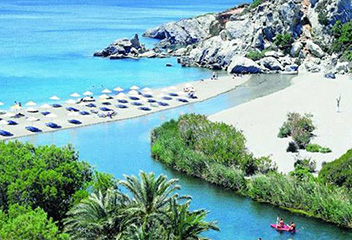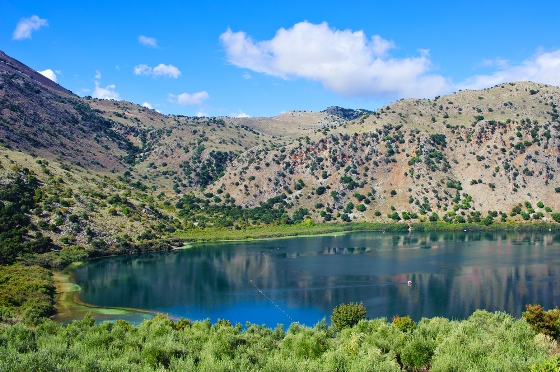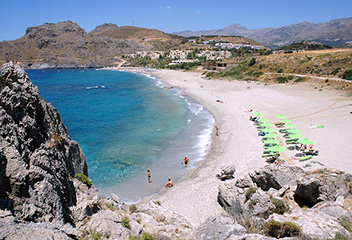
Crete is one of the most popular holiday destinations in Greece. Fifteen
percent of all arrivals in Greece come through the city of Heraklion (port
and airport), while charter journeys to Heraklion last year made up 20% of
all charter flights in Greece.
Today, the island's tourism infrastructure caters to all tastes, including
a very wide range of accommodation; the island's facilities take in large
luxury hotels with their complete facilities, swimming pools, sports and
recreation, smaller family-owned apartments, camping facilities and others.
Visitors reach the island via two international airports in Heraklion and
Chania and a smaller airport in Sitia (international charter and domestic
flights starting May) or by boat to the main ports of Heraklion, Chania,
Rethimno, Agios Nikolaos and Sitia.
Popular tourist attractions include the archaeological sites of the Minoan
civilisation, the Venetian old city and port of Chania, the Venetian castle
at Rethymno, the gorge of Samaria, the islands of Chrysi, Elafonisi,
Gramvousa, and Spinalonga and the Palm Beach of Vai, which is the largest
natural palm forest in Europe.
Cities
Heraklion is the largest city and capital of Crete. The principal cities
are:
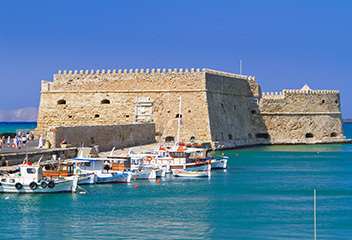
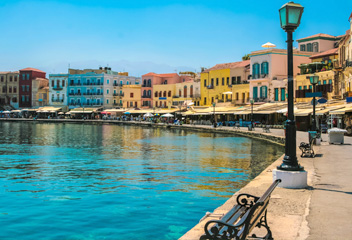
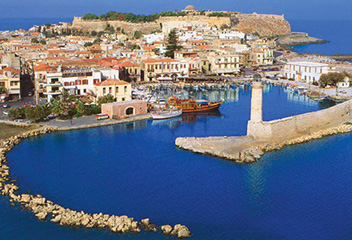


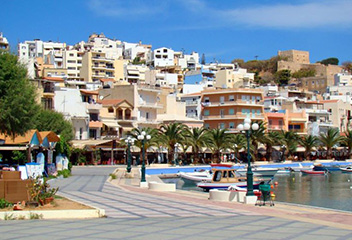

Climate
Crete straddles two climatic zones, the Mediterranean and the North
African, mainly falling within the former. As such, the climate in Crete is
primarily Mediterranean. The atmosphere can be quite humid, depending on
the proximity to the sea, while winter is fairly mild. Snowfall is common
on the mountains between November and May, but rare in the low-lying areas.
While some mountain tops are snow-capped for most of the year, near the
coast snow only stays on the ground for a few minutes or hours. However, a
truly exceptional cold snap swept the island in February 2004, during which
period the whole island was blanketed with snow. During the Cretan summer,
average temperatures reach the high 20s-low 30s Celsius (mid 80s to mid 90s
Fahrenheit), with maxima touching the upper 30s-mid 40s.
The south coast, including the Mesara Plain and Asterousia Mountains, falls
in the North African climatic zone, and thus enjoys significantly more
sunny days and high temperatures throughout the year. There, date palms
bear fruit, and swallows remain year-round rather than migrate to Africa.
The fertile region around Ierapetra, on the southeastern corner of the
island, is renowned for its exceptional year-round agricultural production,
with all kinds of summer vegetables and fruit produced in greenhouses
throughout the winter.
Gorges, rivers and lakes
The island has a number of gorges, such as the Samariá Gorge, Imbros Gorge,
Kourtaliotiko Gorge, Ha Gorge, Platania gorge, the Gorge of the Dead (at
Kato Zakros, Sitia) and Richtis Gorge and waterfall at Exo Mouliana in
Sitia.
The rivers of Crete include the Ieropotamos River, the Koiliaris, the
Anapodiaris, the Almiros, the Giofyros, and Megas Potamos. There are only
two freshwater lakes: Lake Kournas and Lake Agia, which are both in Chania
regional unit. Lake Voulismeni at the coast, at Aghios Nikolaos, was
formerly a sweetwater lake but is now connected to the sea, in Lasithi.
Lakes that created by dams also exist in Crete. They are three: the lake of
Aposelemis dam, the lake of Potamos dam, and the lake of Mpramiana dam.

